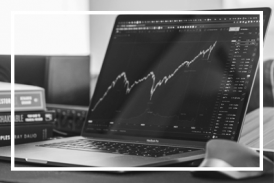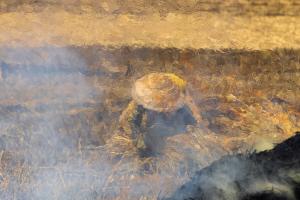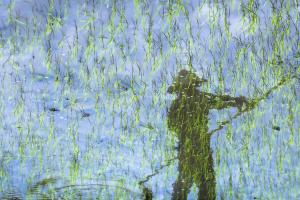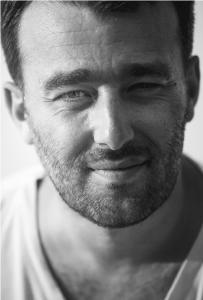'Impressionism: From Photography to Painting' — Réhahn’s Vision of a Modern Movement
French artist Réhahn explores Impressionism in photography through a new fine art book inspired by light, movement, and poetic visual texture.
Best known for his portraits and ethnographic documentation, Réhahn takes a new direction in this work without leaving behind his established style. The book reflects a parallel evolution, one that embraces atmosphere, texture, and memory as central elements of visual storytelling. With over 100 images, the collection offers a meditative experience that slows the viewer’s gaze and heightens emotional perception.
The book is structured thematically, echoing the core principles of Impressionist painters: natural light, fleeting moments, and personal perception. Works such as Oasis, Flame, and Luminous mark a new chapter in Réhahn’s style.
Oasis immerses the viewer in a calm expanse of water, diffused in afternoon light and mirrored by reflections. Flame was captured through heat distortion rising from straw burning in harvested rice fields, transforming the air into a golden haze. Luminous, taken in the early growth phase of a rice field, blends color and motion to reveal the rhythm of the landscape. These photographs do not aim to reproduce reality but to interpret it, following the Impressionist ethos.
Réhahn’s visual language is shaped by layered nuance, soft textures, and a poetic sense of composition. The influence of Japonism, the 19th-century European fascination with Japanese aesthetics, is present in the book’s approach to balance, space, and emotional quiet.
Beyond its visuals, the book reflects Réhahn’s conviction that photography can carry the same emotional and cultural weight as painting or sculpture. In response to the speed of digital media, his images encourage a slower way of seeing. They restore attention to light, silence, and subtle detail. Rather than recording reality, his photographs offer space to pause, observe, and feel.
“La netteté absolue impose l’évidence, et fait taire l’imagination, qui préfère la liberté.”
“Absolute sharpness imposes certainty and silences imagination, which prefers freedom.”
— Réhahn
More than a photography book, Impressionism, From Photography to Painting is also a personal reflection on the meaning of Impressionism itself. It invites the question: “Does Impressionist photography exist?” Without positioning himself as a historian, Réhahn approaches the subject as an artist, engaging in a visual and written dialogue with the origins of the movement. The book draws connections between past and present, not to offer definitions, but to question, interpret, and transmit. Through a combination of research, personal perspective, and photographic experimentation, Réhahn explores whether the spirit of Impressionism can find new form through the camera lens.
EXPLORE MORE
• Full article and project background: https://www.rehahnphotographer.com/impressionism-photography-rehahn/
• Book details and international availability: https://store.rehahnphotographer.com/shop/impressionism-from-photography-to-painting/
• Artist website: https://www.rehahnphotographer.com/
⸻
BOOK DETAILS
• Hardcover, 166 pages
• Format: 21 x 29.7 cm
• Language: English
• Year: 2025
• Shipping: Available worldwide
⸻
ABOUT RÉHAHN
Réhahn is a French photographic artist based in Vietnam, where he has lived and worked for over a decade. He is widely recognized for his portraits and poetic visual storytelling that capture cultural heritage and emotion with subtlety and depth. Réhahn is the founder of the Precious Heritage Museum in Hoi An, a free and permanent exhibition space dedicated to Vietnam’s ethnic diversity, housing one of the most extensive collections of its kind. His work has been featured in major international publications including the BBC, National Geographic, and the New York Times, and exhibited in museums and cultural institutions worldwide. Through his evolving artistic approach, including his recent exploration of Impressionism in photography, Réhahn continues to blur the lines between documentation and interpretation, light and memory.
Giang Dinh
Heritage Creative Media
email us here
Visit us on social media:
LinkedIn
Instagram
Facebook
YouTube
Legal Disclaimer:
EIN Presswire provides this news content "as is" without warranty of any kind. We do not accept any responsibility or liability for the accuracy, content, images, videos, licenses, completeness, legality, or reliability of the information contained in this article. If you have any complaints or copyright issues related to this article, kindly contact the author above.
Find Your Rehab: Comprehensive Online Directory Releases New Resource on Inpatient Alcohol and Drug Facilities at Solana Beach
NORDEN LEACOX ACCIDENT & INJURY LAW Ranks No. 776 on the 2025 Inc. 5000 List of America's Fastest-Growing Companies
RiteCheck Announces Back-To-School Book Bag Giveaway in the Bronx and Harlem
Więcej ważnych informacji
 Jedynka Newserii
Jedynka Newserii

 Jedynka Newserii
Jedynka Newserii

Konsument

Polacy nie korzystają z hossy trwającej na warszawskiej giełdzie. Na wzrostach zarabiają głównie inwestorzy zagraniczni
Od października 2022 roku na rynkach akcji trwa hossa, nie omija ona także warszawskiej giełdy. Mimo to inwestorzy indywidualni odpowiadają zaledwie za kilkanaście procent inwestycji, a o wzrostach decyduje i na nich zarabia głównie kapitał z zagranicy. Widać to również po napływach i odpływach do i z funduszy inwestycyjnych. Zdaniem Tomasza Koraba, prezesa EQUES Investment TFI, do przekonania Polaków do inwestowania na rodzimej giełdzie potrzeba zysków z akcji, informacji o tych zyskach docierającej do konsumentów oraz czasu.
Polityka
Obowiązek zapełniania magazynów gazu w UE przed sezonem zimowym ma zapewnić bezpieczeństwo dostaw. Wpłynie też na stabilizację cen

Unia Europejska przedłuży przepisy z 2022 roku dotyczące magazynowania gazu. Będą one obowiązywać do końca 2027 roku. Zobowiązują one państwa członkowskie do osiągnięcia określonego poziomu zapełnienia magazynów gazu przed sezonem zimowym. Magazyny gazu pokrywają 30 proc. zapotrzebowania Unii Europejskiej na niego w miesiącach zimowych. Nowe unijne przepisy mają zapewnić stabilne i przystępne cenowo dostawy.
Infrastruktura
Gminy zwlekają z uchwaleniem planów ogólnych zagospodarowania przestrzennego. Może to spowodować przesunięcie terminu ich wejścia w życie

Reforma systemu planowania i zagospodarowania przestrzennego rozpoczęła się we wrześniu 2023 roku wraz z wejściem w życie większości przepisów nowelizacji ustawy z 27 marca 2003 roku. Uwzględniono w niej plany ogólne gminy (POG) – nowe dokumenty planistyczne, za których przygotowanie mają odpowiadać samorządy. Rada Ministrów w kwietniu br. uchwaliła jednak ustawę o zmianie ustawy z 7 lipca 2023 roku, a jej celem jest zmiana terminu obowiązywania studiów uwarunkowań i kierunków zagospodarowania przestrzennego gmin na 30 czerwca 2026 roku. Wskazana data może nie być ostateczna z uwagi na to, że żadna z gmin nie uchwaliła jeszcze POG.
Partner serwisu
Szkolenia

Akademia Newserii
Akademia Newserii to projekt, w ramach którego najlepsi polscy dziennikarze biznesowi, giełdowi oraz lifestylowi, a także szkoleniowcy z wieloletnim doświadczeniem dzielą się swoją wiedzą nt. pracy z mediami.













.gif)

 |
| |
| |
|